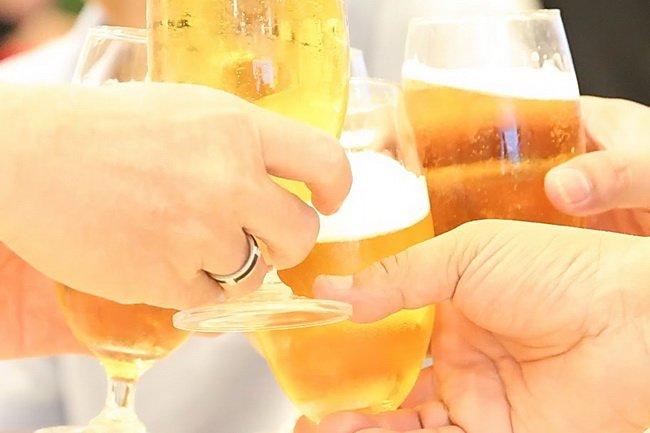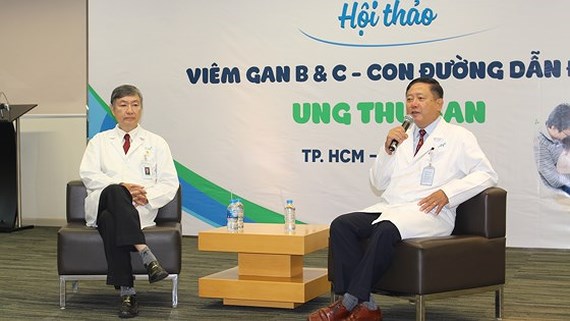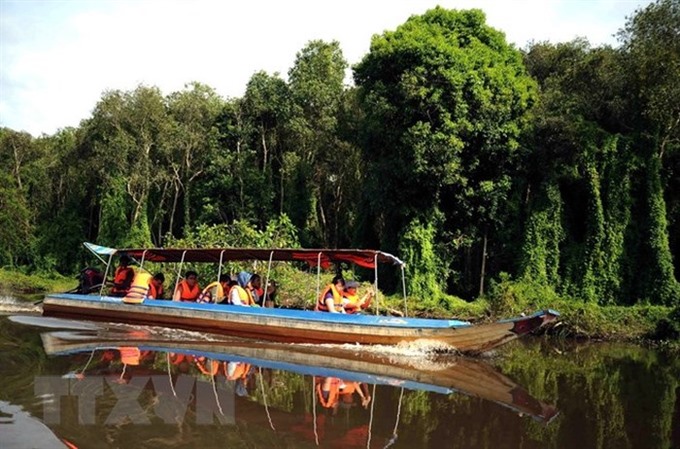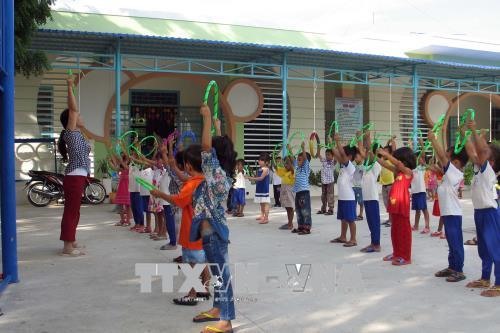|
Social News 1/9
Sweden holds innovation contest for Vietnam students
Participants will form teams of two and their contribution will be assessed based on whether entries are innovative, creative, feasible, sustainable and commercially viable, as well as on what kind of lasting impact they will have. The jury consists of representatives from participating Swedish companies and a Swedish University which provides an amazing opportunity for students to pitch their solutions and innovative ideas to representatives from both the private and public sectors in Vietnam. The deadline for submission is October 28, 2018. The contest’s grand prize is a trip to Sweden to witness Swedish innovations at Swedish companies’ headquarters and Uppsala University. The runner-ups will be given internship opportunities at Swedish companies in Vietnam. A century ago, Sweden was among the poorest nations in Europe. Sweden has a relatively small population with 10 million people or 0.14% of the global population. Yet today, it is a world leader in innovation. A number of international indexes have been developed in a bid to measure the ability of countries to create environments that encourage innovation. According to them, Sweden is one of the most creative places on the map. Swedish Ambassador Pereric Högberg said Sweden benefits from having many basic components already in place, such as economic stability, an inclusive school system where critical thinking is key, safety and security, openness and access to information. “In an environment seeing thing with curiosity, creativity and experimentation, people get the chance to grow, develop their ideas, probe, test, fail and do it again”, said the Swedish Ambassador.
ASEAN-UK
workshop on ageing populations held in Hanoi

The
ASEAN-UK workshop on “Cost-effective solutions and assistive technologies for
low-income ageing populations” was jointly organized by the University of
Greenwich, Le Quy Don Technical University, and the Asian Technology
Institute in Hanoi last week.
The
workshop gathered about 60 attendees including lecturers and researchers with
many institutions from the UK, Italy, Canada, Thailand, Malaysia, Indonesia,
India and Sri Lanka, and representatives of the British Council in Vietnam
and the National Technology Innovation Foundation.
The
workshop took place in the context of population ageing becoming one of the
most important issues and topics on the global agenda due to its great impact
on quality of life and sustainable economic development of countries and
regions.
The
United Nations predicts the rate of population ageing in the 21st century
will exceed that of the previous century, and senior and geriatric population
will reach 2.1 billion by 2050. By 2040, the greying of the population could
shrink the number of working-age adults by between 10% and 15% in ASEAN.
Vietnam’s senior citizens aged 65 and older are predicted to increase by 20%
in the next 18 years.
Presentations
and discussions at the workshop aimed at addressing the core issues and
challenges of ageing populations faced by developing countries, including
Vietnam, and ways to create positive impacts on the lives of low-income
ageing populations via research and development collaboration between the UK
and ASEAN.
The
focus was on cost-effective solutions and assistive technologies, which can
directly benefit the low-income ageing populations in the ASEAN region.
Assess relevant laws before finalizing law on alcohol: expert

The
draft law on the prevention and control of alcohol-related problems will be
feasible if the results of similar laws and rules are examined beforehand,
said an expert at a conference held in the Mekong Delta province of Can Tho
on August 28 to solicit feedback on the proposed law prepared by the health
ministry.
Le
Tuan Khanh, head of the Culture and Society Division under the People’s
Council of An Giang Province, said that the law is aimed at preventing the
harmful effects of beer and other alcohol consumption on human health rather
than preventing alcohol consumption itself.
According
to Khanh, the ill effects of alcohol consumption are due to the behavior of
the user. “We should regulate (the behavior of) alcoholics rather than
alcoholic drinks,” he added.
The
division head suggested that the draft law should achieve two goals: improve
public health and prevent the damage that results from binge drinking, such
as domestic violence, traffic accidents, health problems and economic losses.
He
cast doubt on the feasibility of the law, saying that Vietnam has issued many
similar laws and regulations in the past.
“We
have already enacted a law on the prevention and control of tobacco use,” but
without efficient enforcement, Khanh noted, adding that the execution of this
law should be reviewed beforehand and that its review results should serve as
the basis for the introduction of the law on alcohol in a more scientific and
appropriate manner.
Earlier
at the conference, Nguyen Huy Quang, head of the group writing the draft law,
said beer and other alcoholic drinks have a severe impact on human health,
society and the national economy.
Alcohol
is the direct cause of 30 diseases and injuries and the indirect cause of at
least 200 types of illnesses, as well as one of the four major risk factors
for noncommunicable diseases, he said.
He
pointed out that alcohol consumption damages many organs and functions of the
body and can cause cancers, neurological disorders, cardiovascular diseases,
digestion problems and immune deficiency.
“Alcohol
is one of the three leading causes of the increasing rate of traffic
accidents in Vietnam for men aged 15 to 49,” Quang said, adding that some 800
deaths per year in the country are associated with alcohol-related violence.
He
highlighted that economic losses resulting from alcohol consumption are
estimated at VND65 trillion (US$2.8 billion), while the annual State budget
collection from alcoholic products is some VND50 trillion.
At
a workshop in Hanoi City in April, the representatives of beverage producers
and traders opined that the draft law is unlikely to be feasible. In the
first draft, the law bans the sale of alcohol after 10 p.m., but the
provision may face obstacles in its execution.
It
is difficult to supervise the sale of alcohol and beer, and limiting the time
for selling alcohol may affect tourism, stated Nguyen Van Viet, chairman of
the Vietnam Beer, Alcohol and Beverage Association.
The
health ministry is finalizing the draft and plans to submit it to the
National Assembly for consideration in October. The draft law is expected to
control the demand and supply of alcohol to improve public health.
Techmart on medical equipment to be held in October
The
Center for Science and Technology Information (CESTI) of Ho Chi Minh City
announced that the upcoming technology and equipment fair (Techmart) on
medical equipment with the theme ‘Environmental Solutions for Hospitals and
Clinics’ will be in October at the city’s technology trading floor –
Techmart Daily.
The
Techmart in the healthcare field this time will focus on displaying and
introducing cutting edge technologies as well as equipment related to disease
diagnosis, health care, medical sewage and waste treatment.
These
technologies are either developed by domestic companies or imported from
international prestige brand names and suitable for the Vietnamese
environment.
In
the event, there will also be many technological workshops to present
state-of-the-art technologies which are widely applicable in disease
diagnosis and treatment, healthcare and rehabilitation activities, and waste
treatment to protect the environment for hospitals and clinics.
To
further support technological exchanges and collaborations, the organization
board is going to survey the investment demands on medical technology and
equipment of businesses of the field in HCMC as well as the southern
provinces.
It
also saves a professional consultation corner to deliver advice on technology
and equipment during the event.
Hepatitis B, C infection responsible for most liver cancer
cases in Vietnam

At the seminar
Medical
experts said at a seminar themed ‘Hepatitis B and C – Path to liver cancer’
held by the City International Hospital lately that 88 percent of liver
cancer patients in Vietnam had had hepatitis B and C before.
The
Southeast Asian country has over 125,000 fresh cancer cases annually and more
than 90,000 of them died of the disease.
People
with hepatitis B have an increased risk of liver cancer. Worse, according to
experts, hepatitis B has become a leading cause of death killing 1.34 million
people annually.
In
2017, it was estimated that over 40,000 Vietnamese people died because of
hepatitis B and C while in the world, within 15 past years, the mortality
rate due to viral hepatitis has gone to 22 percent.
According
to the World Health Organization, Vietnam has high rate of hepatitis over 7 percent
and hepatitis virus of 10-20 percent the whole population or 10 million
Vietnamese people have hepatitis virus. Worse, in recent years, the country
has 10,000 fresh cases of hepatitis.
Deputy
Director of the City International Hospital Dr. Tran Quang Binh said that
around 8 million Vietnamese people have cirrhosis and liver cancer and around
20 million others have hepatitis B and C, which leads to liver cancer.
In
endemic areas, Hepatitis B virus infection occurs mainly mother to child
transmission and during infancy with 90 percent, said Dr. Nguyen Tan Cuong,
Director of the hospital.
Additionally,
those who have a combination of four unhealthy lifestyle factors; smoking,
poor diet, lack of exercise and drinking, sharing needles, eating food with
aflatoxin will increase the risk of getting hepatitis, Dr. Cuong added.
Foot and ankle surgeons deliver humanitarian aid in Vietnam
Volunteers from the Orthopedic Foot & Ankle Foundation, the philanthropic arm of the American Orthopedic Foot & Ankle Society (AOFAS), have traveled to Vietnam to provide corrective surgery to underserved children and adults with lower extremity deformities and share advanced surgical techniques with Vietnamese doctors. This year's volunteer group comprised eight foot and ankle orthopedic surgeons from four different countries and worked at Viet Duc Hospital and the Institute for Rehab and Orthopedics in Hanoi as well as clinics in Dien Bien Phu, Ba Vi, and Quang Ninh in Vietnam’s north. Over the course of four weeks, they evaluated 278 patients and performed surgery on 90, at no cost to the patients. “This program is a wonderful opportunity to broaden your experience not only in medicine and orthopedic surgery but also in problem solving,” said volunteer Dr. Sandra A. Eisele from Cincinnati, Ohio. “We did not have the equipment we are accustomed to in the operating theater, so we needed to be creative. Experiencing healthcare delivery in a completely different culture is well worth the time and effort.” Since the first Overseas Outreach Project to Vietnam in 2002, foot and ankle orthopedic surgeons have performed nearly 1,500 surgeries and evaluated more than 3,500 patients. Foot and ankle orthopedic surgeons are medical doctors who specialize in the diagnosis and treatment of musculoskeletal disorders and injuries to the foot and ankle. Their education and training consists of four years of medical school, five years of postgraduate residency, and a fellowship year in specialized surgical training. These specialists care for patients of all ages, performing reconstructive surgery for deformities and arthritis, treating sports injuries, and managing foot and ankle trauma. The Orthopedic Foot & Ankle Foundation is a 501(c)(3) organization that advances AOFAS’s mission of improving lives through exceptional orthopedic foot and ankle care. Through its funding of humanitarian endeavors, educational outreach programs, and innovative research, the Foundation enhances foot and ankle care for patients around the world.
Long An to
focus on ecotourism

The
People’s Committee of Long An Province expects to welcome 1.3 million
tourists this year, up 24 per cent over last year.
At
a conference held on Tuesday on the development of Long An tourism, experts
proposed ways to develop the Mekong Delta province into an attractive
destination.
Nguyễn
Văn Mỹ, general director of the Lửa Việt Tourism company, said the tourism
sector must focus on quality sites and products to attract more visitors.
For
example, with its conservation areas, melaleuca forests and medicinal
forests, Mộc Hoá District could develop ecotourism combined with medicinal
baths, he said.
Phạm
Văn Cảnh, deputy chairman of the province’s People’s Committee, said that
better infrastructure was needed to connect tourism sites.
The
province, located adjacent to HCM City, has many historical-cultural sites
such as Láng Sen Wetland Reserve and the Tân Lập floating tourism village.
It
is one of three provinces including Tiền Giang and Đồng Tháp provinces that
have collaborated with HCM City to create a tour called Một Hành Trình Ba
Điểm Đến (A Journey to Three Destinations).
Last
year, Long An welcomed more than one million tourists, including 15,000
foreign tourists with total revenue of more than VNĐ480 billion (US$20.6
million).
Đà Nẵng-Quảng Ngãi Highway to open for traffic on National Day

The Đà Nẵng - Tam Kỳ Highway, which opened last year, is part
of the Đà Nẵng - Quảng Ngãi Highway. — Photo baogiaothong.vn
The
entire length of the Đà Nẵng-Quảng Ngãi highway, connecting the two central
provinces, will open for traffic from National Day, September 2.
The
highway, stretching over 139 km and linking with National Highway No1, cost
about US$1.64 billion, of which $798 million was loaned from the Japan
International Co-operation Agency and $590 million from the World Bank. The
rest is allocated from the State budget.
The
highway allows speed limits of up to 120km per hour, which helps reduce
travel time from Đà Nẵng to Quảng Ngãi to one hour and a half instead of the
usual 3 hours using National Highway No1.
Besides
helping relieve traffic pressure on National Highway No1, the Đà Nẵng-Quảng
Ngãi Highway is also expected to boost socio-economic development of the
localities it runs through.
According
to the project manager, in August 2017, the Transport Ministry opened the
first part of the highway – 65 km from Đà Nẵng to Tam Kỳ City in Quảng Nam
Province.
The
second part from Tam Kỳ City to Quảng Ngãi Province was completed in July
2018 and by early this week, work was completed and ready for inauguration.
The
Transport Ministry on Tuesday asked relevant authorities in Đà Nẵng, Quảng
Nam and Quảng Ngãi to assist in the inauguration of the highway on National
Day.
The
project investor Việt Nam Expressway Corporation announced toll fees for
using the highway. The lowest rate was set at VNĐ20,000 per trip for cars
with less than 12 seats, trucks with loads of less than two tonnes and public
buses. The highest rate was set at VNĐ380,000 per trip for trucks with loads
of at least 18 tonnes and 400 feet container trucks.
Ninh Thuận seeks funds to help ethnic minorities

Ninh Thuận Province is seeking more funds to aid ethnic
minority people and residents who live in mountainous regions.
The
coastal province of Ninh Thuận has asked the Government for more funds to
improve the quality of life of ethnic minorities and local residents in
mountainous regions.
Lê
Thanh Hùng, deputy head of the province’s Board for Ethnic Minority Affairs,
said the province needs VNĐ365.8 billion (US$15.6 million) to provide land,
housing and preferential loans to residents.
The
province has 9,223 poor ethnic minority families who need assistance.
Lê
Văn Bình, vice chairman of the Ninh Thuận People’s Committee, said that local
authorities had provided houses for poor families and used financial aids to
build houses for them.
The
Việt Nam Bank for Social Policies has allocated VNĐ20 billion for loans which
will be used to provide land for 85 households, water supply systems for
1,700 households, and assistance to 2,500 families who need help in changing
jobs.
For
the remaining number of households, the province lacks sufficient funds, Bình
said, so the province has to depend on the Government for financial support.
The
province has 37 communes and towns and 124 hamlets in ethnic minority and
mountainous areas, with a total of 162,115 people, accounting for 23.5 per
cent of the province’s population.
The
ethnic minority and mountainous region covers a wide natural area, with
nearly 291,000ha, accounting for more than 86 per cent of the province’s
total natural areas. These are considered key strategic areas for the
economy, defence and security, and environmental protection.
Moreover,
the region has an abundant amount of land for development of industry,
agriculture, forestry and eco-tourism services and products that preserve the
culture of ethnic minorities.
The
Government has issued many resolutions, instructions and action programmes on
poverty reduction and economic development that have benefited locals.
Over
last seven years, the provincial People’s Committee has integrated some
programmes and projects, such as the National Strategic Programme, to get
more than VNĐ5.9 trillion to build nearly 800 kinds of infrastructure
projects of small and medium scale.
Roads
have been paved, while more schools and health stations now meet local
demand.
More
than 96 per cent of households in the region are connected to the national
power grid, while more than 75 per cent have water for usage.
Many
localities in the region have set up special areas for agriculture which
bring high economic value, raising local people’s incomes.
The
region’s total production value has increased by 11.9 per cent per year,
while last year it reached nearly VNĐ3.1 trillion.
The
income per capita has risen from VNĐ12 million in 2015 to VNĐ17 million last
year, which has helped reduce the number of poor households by 3 per cent in
line with the National Povery Reduction Programme 30A, especially in Bác Ái
District, where the reduction was 5.2 per cent.
The
region now has 9,898 poor households, accounting for 28.7 per cent of the
province’s total.
Hanoi, HCM City make it to list of 15 best Asian places to
visit
Hanoi
and Ho Chi Minh City are among the 15 best destinations in Asia, according to
a new ranking from the US News newspaper.
The
ranking considered local prices, accessibility and the variety of attractions
in each destination along with travelers’ feedback, and put Hanoi in 14th
place followed by HCM City.
Vietnam’s
capital casts a spell over foreign tourists with its history and culture,
shopping, dining, and natural landscapes.
Kick
off a new day with a tour around Hanoi’s Old Quarter where nostalgic visitors
can see how it has expanded from its original 36 streets before moving to
Dong Xuan, the city's largest market, US News said.
In
HCM City “mopeds whiz by at all hours of the day, cafes take up entire
sidewalks and street food vendors serve up delectable local fare despite the
year-round heat and humidity,” it said.
Hong
Kong topped the list, followed by the Maldives, Tokyo, Phuket, and Bali.
In
the Economist Intelligence Unit's recent ranking of the world's most livable
cities, Hanoi and HCMC made it to the top five improvers.
Earlier
this year Vietnam’s two biggest cities were named among the 10 cheapest
cities in Southeast Asia.
HCM
City, the southern metropolis, took the 9th position when Hanoi secured the
7th spot, as shown in the Cost of Living Index 2018 conducted by Numbeo, the
world’s largest database of user contributed data about cities and countries
worldwide.
Phu My Hung Green Day 2018 encourages healthy lifestyle

The
Phu My Hung Green Day 2018 was organized near the Crescent Lake in Phu My
Hung Urban Area in HCMC’s District 7 on August 25 and 26 with an aim to
encourage a green and healthy lifestyle.
The
event featured many booths introducing a wide range of clean food like
vegetables, eggs, milk, rice, fruit juice as well as natural and organic
skincare products.
Participants
also had a chance to learn about home gardening methods so that they can grow
their own clean vegetables and fruits at home, and take part in workshops on
organic agriculture hosted by experienced experts.
In
addition, there were lots of entertaining activities for children at the
event, including drawing and coloring, making sand paintings, painting
statues, fishing, and classifying beans.
The
Phu My Hung Green Day is among a series of community events organized
annually by Phu My Hung Development Corporation, offering local communities
the opportunity to take part in meaningful programs that help improve the
quality of their lives.
VNN
|
Thứ Bảy, 1 tháng 9, 2018
Đăng ký:
Đăng Nhận xét (Atom)
Không có nhận xét nào:
Đăng nhận xét